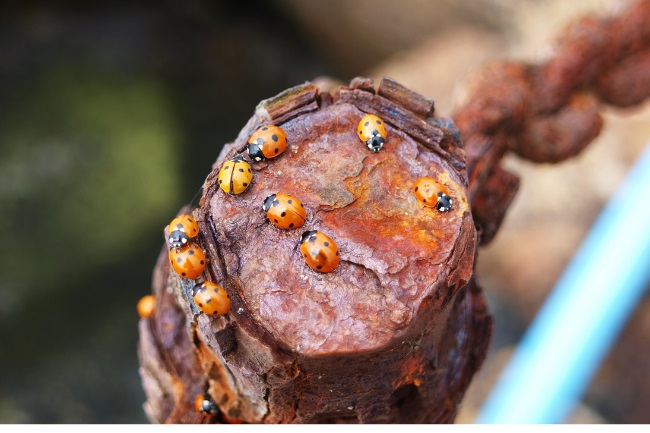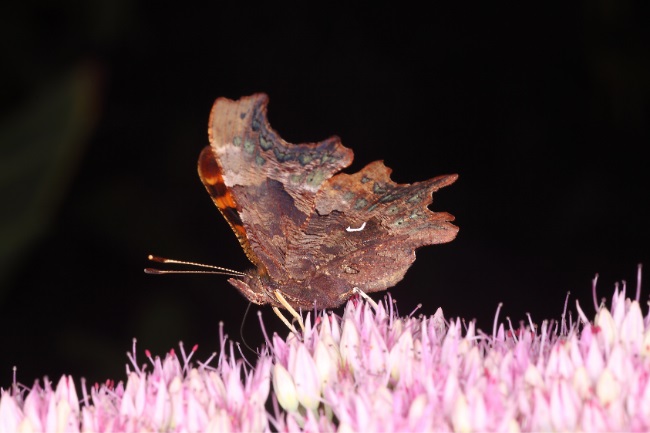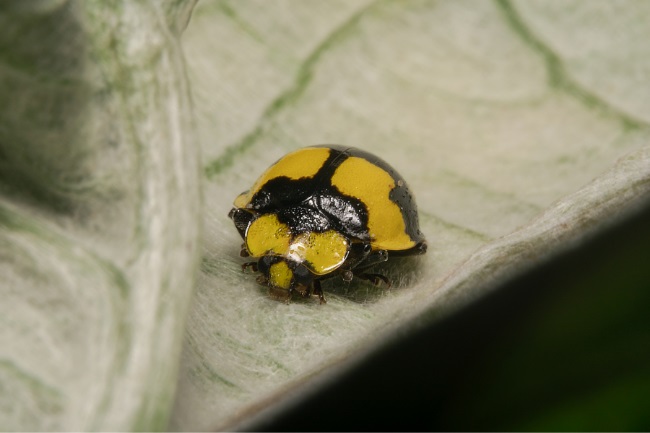Like most animals, ladybugs do sleep. They mainly sleep at night, though they may enter torpor, a state similar to sleep during poor weather conditions in the day.
Contents
| Species | Sleep Patterns |
|---|---|
| Asian Lady Beetle | Exhibits diurnal activity patterns, typically active during the day and rest during the night |
| Seven-Spot Ladybug | Shows diurnal activity, with increased movement and feeding during the day and decreased activity at night |
| Convergent Ladybug | Demonstrates diurnal behavior, being more active during daylight hours and relatively inactive during the night |
Why do living beings need sleep?
Most studies on sleep within different animal species have found it is crucial for their physical and mental well-being. Sleep is a time when our body has a chance to rest and repair, in particular our nervous system. If we do not get the right amount of sleep, our functions are impaired, and we find tasks more challenging to complete. Memories are also more difficult to form, meaning we can become forgetful. This has been found to be the case in many animal studies too, with fruit flies finding it more difficult to complete a maze without the right amount of sleep.
During sleep, our bodies can repair damage. Studies have shown increase protein production during sleep, this can help with growth and development. For example, puppies need between 18-20 hours of sleep a day. Not getting the right amount of rest can affect their growth and behaviour.
Human children and the young of many other species are the same, with toddlers needing to sleep 11-14 hours, whereas adult humans only require on average 7-8 hours sleep. Areas of the brain that control emotions and social interactions are also affected by a lack of sleep, which is perhaps why there are so many tantrums at bedtime.
Also read: Do Ladybugs Hibernate? (Winter Dormancy and Torpor)
Do insect’s sleep?
Perhaps one of the first things to consider with insects is that they simply can’t get the typical ‘shut eye’ humans get. In practical terms, they don’t have eyelids, meaning they can’t close them to get to sleep. However, most insects will pull in their appendages and bow or lower their body when entering into a rest period. We know that many insects do have these periods where, like our sleep, their muscles relax, and they are unresponsive. If an insect is disturbed from its beauty slumber, it will even be groggy and slow to respond, as we often are.
However, although many warm-blooded animals, such as dogs and primates, experience REM sleep and therefore dream, there is little evidence to suggest this occurs amongst insects.

Another uncertainty is where the line is drawn between torpor and sleep. Torpor is an inactive state that animals can enter to survive difficult conditions. The is particularly common due to seasonal temperature changes or resource scarcity. Torpor allows the creature to withstand conditions that might otherwise kill them. Butterflies, for example, can enter torpor when temperatures suddenly fall.
They need warmth to give them the energy to fly. They also sleep, finding a suitable spot in the evening and closing their wings to get some rest. Differentiating between the two states can be difficult, partially because insects do not enter REM sleep.
Despite these differences between how an insect might take its rest and how mammals do, we still define their rests as sleep. However, Torpor is not thought to have the same health benefits as a proper sleep will have, with animals awaking from torpor being sleep deprived. Many animals even ‘wake up’ from torpor or hibernation to enter sleep in order to get some proper rest.
Do ladybugs sleep?
Similar to many insects, ladybirds sleep by tucking in their legs and head and hunkering down for a good old nap.
In general, they do this at nighttime, though they may be found in a similar position during particularly cold conditions. Like all insects, they require an external heat source to keep them moving, so during a heavy rain shower or late frost, they are often better off just taking the day off.

Like most living organisms, including many single-celled organisms, the ladybug follows a circadian rhythm. This is essentially an internal clock that uses external light cues to manage the release of hormones and alter physical characteristics like body temperature.
| Resting Behavior | Description |
|---|---|
| Stationary Rest | Ladybugs may stay still on a leaf, stem, or other surfaces for extended periods, conserving energy |
| Wing Tucking | Ladybugs often fold their wings tightly against their body when at rest, protecting them from damage |
| Clustering | Some ladybug species may cluster together in groups when resting, providing protection and warmth |
| Camouflage | Ladybugs can also use their coloration to blend with their surroundings, reducing the chance of being detected by predators while resting |
The circadian rhythm is composed of a 24-hour cycle, which can be handled differently for specific species. Research has found that humans have a 25-hour cycle, which resets itself with light perception. This is why looking at bright screens close to bedtime can affect your sleep, as the light resets your circadian rhythm. It’s also why we get jetlag because our bodies are working on a different internal clock to the time zone we find ourselves in.
Therefore, Ladybugs will use the presence and absence of light to determine what they should be up to and will rise early with the sun to start the day.

Many insects choose to sleep in locations where predators can less easily spot them. Some have camouflage to make it particularly difficult for predators to spot them. The comma butterfly (Polygonia c-album), for example, is very eye-catching when it’s flying around, but when it stops and rests, its closed wings look like a dried leaf. Ladybugs, on the other hand, aren’t trying to hide.
Their bright colours warn predators that eating them would be a mistake. Therefore they just spend their sleeping time close to their favourite thing, their food source. Many bee species are often found doing the same thing, with a large number of species catching a brief nap inside a flowerhead, whilst others use their mandibles to grasp on to plant stems or seedheads and dangle below as they snooze.
A ladybugs brain
Insects are never thought of as being the most intelligent of animals. Still, recent research is telling us more and more about their problem-solving abilities, as well as their capacity to form and hold on to memories. Their brains may be vastly simpler than ours, but one reason for this is that they also aren’t as important.
Some insects can even survive decapitation, living on without a brain to guide their body. This is because, although the brain controls several vital functions, most notably their eyes and their mouthparts, they have several other ganglion (groups of neurons) which have control over different parts of their body, such as their wings and legs. The whole thing is joined together through a central nerve cord.

These differences in the human (or mammal) and insect brain may be why our type of sleep is so different. It is thought that insects can experience feelings such as pain; it’s unlikely they would be able to feel grief. It’s these anatomical disparities that may be why insects don’t appear to enter REM sleep. Still, as we often find when we make assumptions about other species, it’s often less about what they are capable of and more about how closely we’ve been looking. Maybe future scientific research will find that ladybugs not only sleep but also dream.

